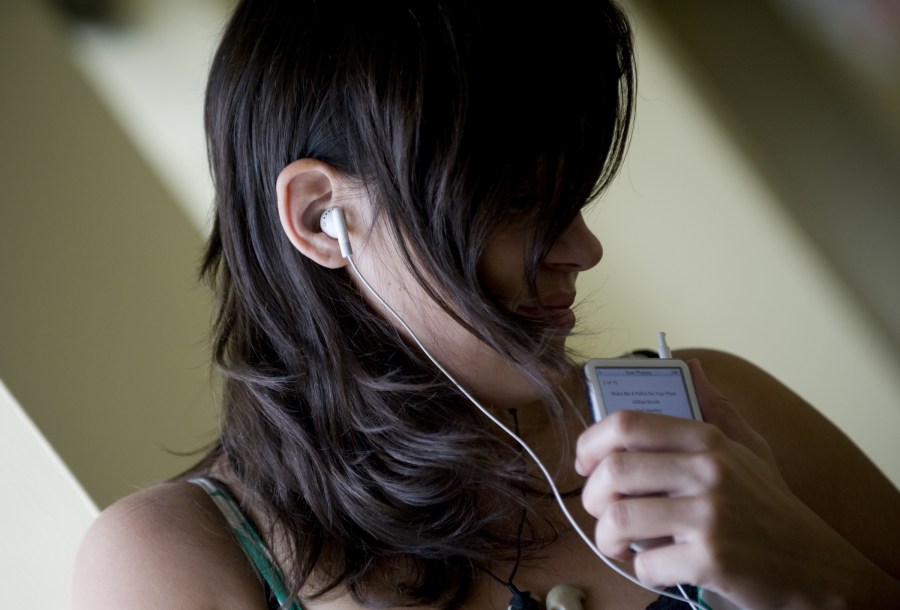
The popularity of portable music players is one possible factor contributing to the rise of hearing loss among adolescents. (photo by Joe Howell)
Hearing loss spikes among U.S. adolescents
Hearing loss is now affecting nearly 20 percent of U.S. adolescents age 12-19, a rise of 5 percent over the last 15 years, according to a new Journal of the American Medical Association (JAMA) study co-led by Ron Eavey, M.D., director of the Vanderbilt Bill Wilkerson Center and the Guy M. Maness Professor in Otolaryngology.

Ron Eavey, M.D.
Eavey, who conducted the study with former Harvard colleagues Josef Shargorodsky, M.D., Sharon Curhan, M.D., and Gary Curhan, M.D., said the results are troubling because hearing loss in adolescents is on the rise and researchers don't have any hard evidence to explain why.
“What jumped out at us was the fact that hearing loss increased a lot,” Eavey said. “Overall it went from 15 percent of adolescents to 20 percent of adolescents.
“You already are looking at one in 20 adolescents who has a notable hearing loss and one in five is showing signs that they are on the route to having hearing loss.”
The study compared hearing tests conducted as part of the Third National Health and Nutrition Examination Survey (NHANES III), 1988-1994, and NHANES 2005-2006.
The earlier study examined 2,928 participants and the 2005-2006 study examined 1,771 participants, 12-19.
The prevalence of any hearing loss increased from 14.9 percent in 1988-1994 to 19.5 percent in 2005-2006.
“One could have hypothesized the opposite,” Eavey said. “There are vaccines out now that can stop bacterial meningitis and they also help get rid of some cases of ear infections, so that incidence is down.
“The knee-jerk answer that one might conclude, although supporting data is not clear, is that the increase is caused by loud volume.”
Hearing loss in young persons can compromise social development, communication skills and educational achievement, according to the authors.
“We can modify noise exposure, and that's where I think we can at least try and put some brakes on, whether it is coming from noise-induced hearing loss or not,” Eavey said. “We are looking at the front wall of an epidemic and we can help to prevent the loss to allow the kids to enjoy their ears and their great music a lot longer.”
Eavey, who also chairs the Department of Otolaryngology, said parents and children should pre-set their electronic music devices to somewhere between one-half and two-thirds maximum volume because any sound over 85 decibels (dBs) exceeds what hearing experts consider to be a safe level, and some MP3 players are programmed to reach levels as high as 120 dBs.
“As parents, we can't hear how loud their music is when they have the earbuds in, so this is an important step,” he said. “I can tell you that if you hear the music coming from their headphones, it is too loud. But an easier way to know for sure is to preset the device. This will still allow them to listen to and enjoy their music but will safeguard against ear-damaging volume levels.”













